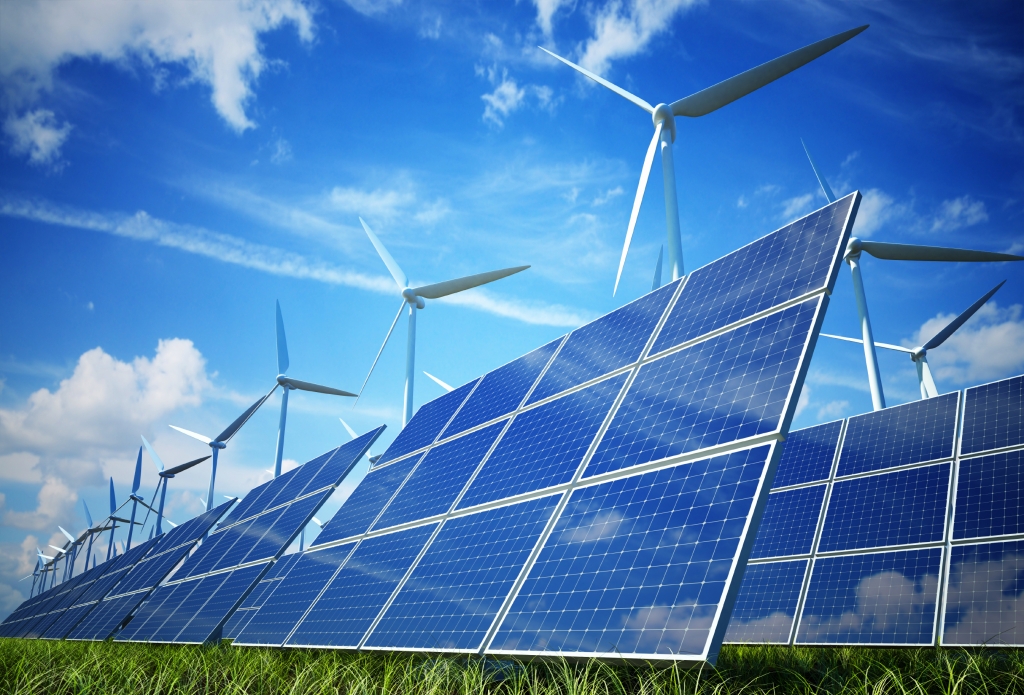
Currently, fossil energy sources such as coal, oil, and gas have been a major source of energy for electricity generation in many countries around the world as well as in Vietnam. The aforementioned sources of energy are also being exhausted, while Vietnam is facing major challenges because the conventional energy sources to meet the power generation needs have been and are exceeding the supply capacity. Therefore, with the growth of electricity demand of about 10% per year, the issue of promoting research and use of renewable energy sources, especially wind and solar energy, is extremely urgent. for Vietnam. This article presents an overview of the current status of the use of energy sources for power generation in Vietnam, as well as the prospect of using renewable energy sources, in particular wind and energy. sun for electricity generation.
Demand for electricity and the structure of energy sources for electricity generation
Vietnam is one of the developing countries in Southeast Asia with a relatively high level of electricity demand increase, while the proportion of fossil energy used in electricity generation is still quite large. In addition to the risk of a lack of fossil energy sources due to the depleted reserves, the use of fossil energy is causing pollution and affecting the environment is also a situation that Vietnam has to face.
Meanwhile, Vietnam is known as a country with quite large potential for renewable energy (RE) but currently only exploits and uses a very small percentage. Up to now, the number of large-scale projects in our country is very small, the proportion of installed capacity of RE power plants in the total installed capacity of the whole system is still very modest. Although there have been many efforts to promote the development of RE and the power source from RE in recent Power Development Plans, especially the PDP VII, the development of RE in Vietnam is still not commensurate with the potential. power.
In addition, Vietnam has not yet met the development goals of Vietnam's RE Development Strategy until 2030, with a vision to 2050 approved, as well as the National Strategy on Green and Copper Growth. Vietnam has not yet guaranteed its commitments in the United Nations Summit on Climate Change (Paris Agreement).
Promote the use of renewable energy is a trend of countries in the world because of their important role and superiority, especially in the context that the technology of producing electricity from RE is developing very fast, gradually ensuring the ability of renewable energy. compete with traditional energy sources. Therefore, the increase in the proportion of electricity produced from RE is an indispensable requirement for the development of the electricity system, which should be included more specifically in the Vietnam Electricity Planning.
According to the VIIth master plan (adjusted), Vietnam's electricity demand will reach 265 billion kWh in 2020 and over 572 billion kWh by 2030. The total installed capacity in 2020 will be 60,000 MW and will increase to 129,500 MW in 2030, in which coal thermal power will account for an increasing proportion until 2030. Specifically, if in 2015-2016 coal thermal power If only accounting for 34%, then it will reach 49.3% in 2020, 55% in 2025 and 53.2% in 2030.
For electricity from renewable energy (including small hydro), the increase is limited. Specifically, about 6.4% in 2020, about 6.9% in 2025 and 10.7% in 2030. In terms of the structure of energy sources for electricity generation, according to the report of the National Electricity System Moderation Center in 2015, thermoelectricity accounted for 54.15% of the source capacity by type of fuel (in which coal thermal power 28, 88%, thermoelectricity 21.85% and oil thermoelectricity 3.42%); 39.96% hydroelectricity and 5.9% are renewable energy, of which mainly small hydroelectricity, wind and solar power also account for a very small percentage.
Currently, the three main sources of electricity generation are hydroelectricity, gas thermal power and coal thermoelectricity, accounting for over 94% of the total power capacity in our country's electricity system. Renewable energy is not used much for electricity generation, more than 88.6% of electricity produced from RE in our country is from small hydropower plants (Nguyen Ngoc Hoang, 2015). In particular, wind power and solar power only make a small contribution to the national electricity production structure. According to the annual review report of the National Load Dispatch Center, the installed capacity of electricity produced from RE until 2014 is 2,009 MW. Specifically, small hydro is 1,938 MW, biomass of 24 MW, wind of 46 MW, solar power of 1MWp (National Electricity Moderation Center, 2015).
Wind and solar energy potential
Wind power source
According to the report of Power Engineering Consulting Joint Stock Company 3 (PECC3), Vietnam's wind energy potential at 80m height has an annual average speed greater than 6 m / s is about 10,637 MW, with an area of about 2,659 km2, equivalent to about 0.8% of the country's area. PECC3 thinks this area is financially viable. According to GreenID, the technical potential of wind energy in Vietnam is about 27,750 MW
The Ministry of Industry and Trade (MoIT), with the support of the World Bank, has conducted wind measurement models at three selected points, contributing to the redefinition.